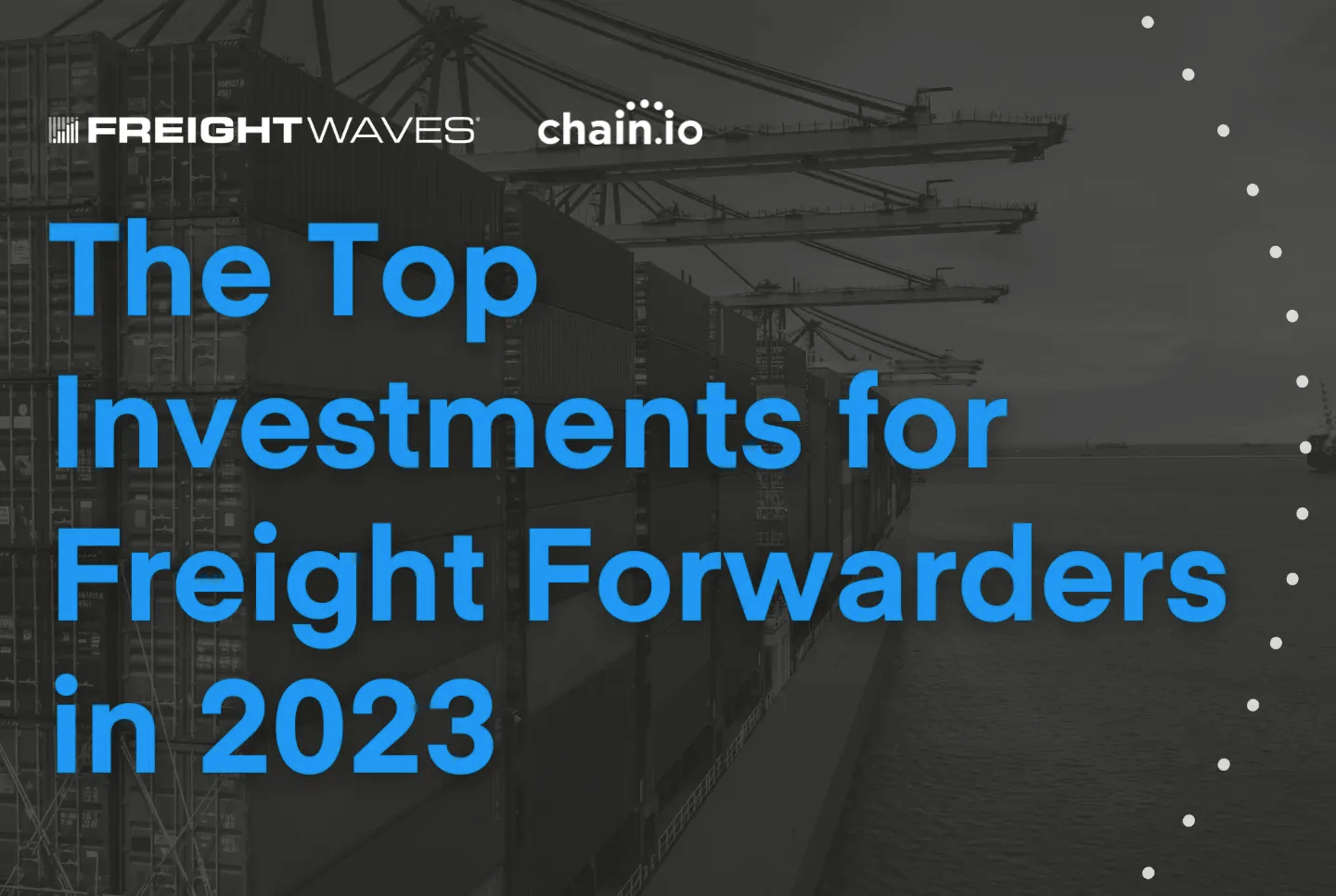
Companies across the global supply chain have just started to recover from the disruptions in the last few years. From a pandemic to backlogged ports, logistics service providers and shippers have had to quickly adapt to maintain efficiency despite supply chain chaos.
Now, facing a predicted economic downturn, record inflation, and limited resources, logistics companies have continued to find new ways to manage. For most freight forwarders, this has led to increased technology investments.
To meet the needs of their customers, logistics companies have increasingly turned to technology to automate their processes and improve efficiency, helping them compete with fewer resources amidst more volatility in the global economy.
In partnership with FreightWaves, we surveyed freight forwarders about the changes in their technology investments in the last two years, their customers’ technology expectations, and where they plan to invest in 2023. And despite the forecasted economic downturn, freight forwarders are still prioritizing investments in tech.
Explore Our ResearchInvestments in Technology Increased
Over the last few years, the demand for digital transformation and more efficiency has surged. In response, 80% of freight forwarders said they have increased their technology spend since 2020. The other 20% of participants said their investments in technology have remained the same, but none reported a decrease in tech spend. In an industry that has been slow to adapt to the digital landscape, this investment is significant.
The disruptions and delays that have challenged the supply chain industry prompted this increase in investment, and with more challenges on the horizon, spending is likely to continue to increase. For freight forwarders to be prepared for future disruptions, having transparency into all of their data is essential.
Customers Want Visibility Data
After years of shipping disruptions, freight forwarders say their customers want more supply chain visibility. Whether there are immediate disruptions, or business is running smoothly, customers want to know where their freight is at any time. Freight forwarders who are investing in supply chain visibility data can respond to questions faster and anticipate issues before they happen.
While freight forwarding customers are most interested in better visibility data, they’re equally interested in many types of logistics tech.
Freight Forwarders are investing in all types of logistics tech:
- Visibility to customers
- Pricing and quote optimization
- Big data and analytics
- Internal visibility
- Automating operations
- Risk management
- Carbon and environmental data
Stay Ahead of Carbon Regulations
While the forwarders we surveyed didn’t rank investments in carbon data as their top priority, government regulations will soon require logistics companies to have accurate data for reporting their carbon emissions and environmental impact.
As more focus is put on the carbon footprint of business operations, it’s important to be able to accurately and reliably report on the results of moving freight. Forwarders need to decide whether they will wait for customers to ask for specific capabilities, like carbon reporting, or whether they will proactively offer new tech to keep their current customers and stay ahead of competitors and future regulations.
Prioritize Supply Chain Automation
Supply chains and supply chain data has always been messy, but with the current economy and disruptions, managing shipments has become increasingly complex. Even in “normal” shipping situations, the amount of freight that forwarders must move has boomed with the rise of e-commerce.
To keep up, forwarders need to prioritize investments in supply chain technology that automates their shipping processes. Making sure the correct information is automated throughout systems is key to ensuring freight arrives on time in the correct port, carriers get paid, and customers are aware of their shipment’s status, among other things.
Chain.io Integrates Supply Chain Technology
According to our research with FreightWaves, freight forwarders plan to invest the most in supply chain automation next year. And with an investment in automation technology comes a need for integrations between new software and forwarder’s legacy systems. If you’re a freight forwarder investing in tech next year, Chain.io can help you connect all of your systems so you can continue to focus on growing your business.
Data should not live in silos. It needs to be accessible to the right person, at the right time, and in the right place, or you’ll be getting a fraction of the value from the investments you’ve made.
At Chain.io, we are automating best practices and changing the way forwarders leverage data with customers. Our platform was built by supply chain experts, so we know what your data actually means, and we can connect your ecosystem faster than internal teams or generic integrations platforms.
For more details, download the full report for free, or book a demo with Chain.io’s supply chain experts to get started with your automations today.
Download the ResearchBook a Demo